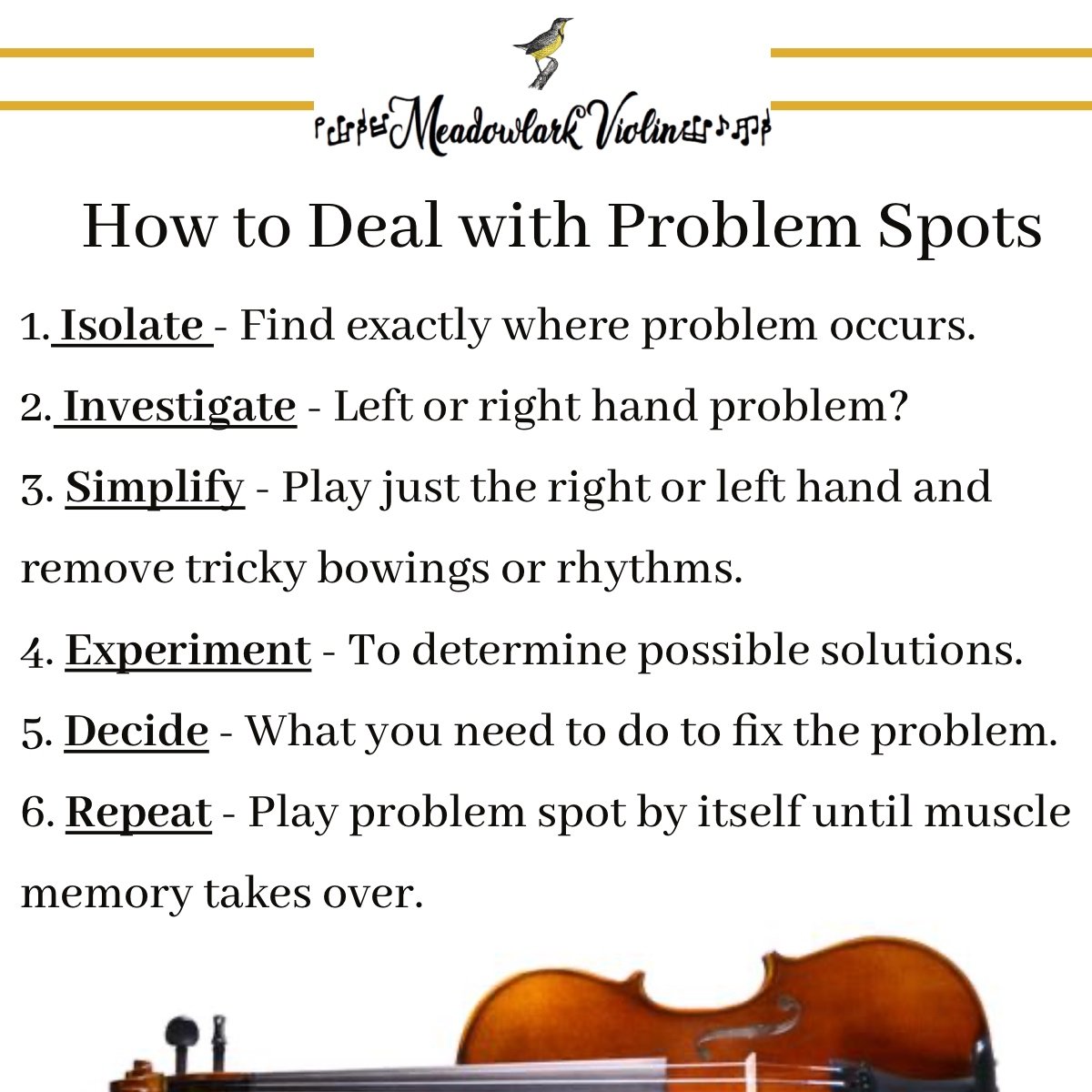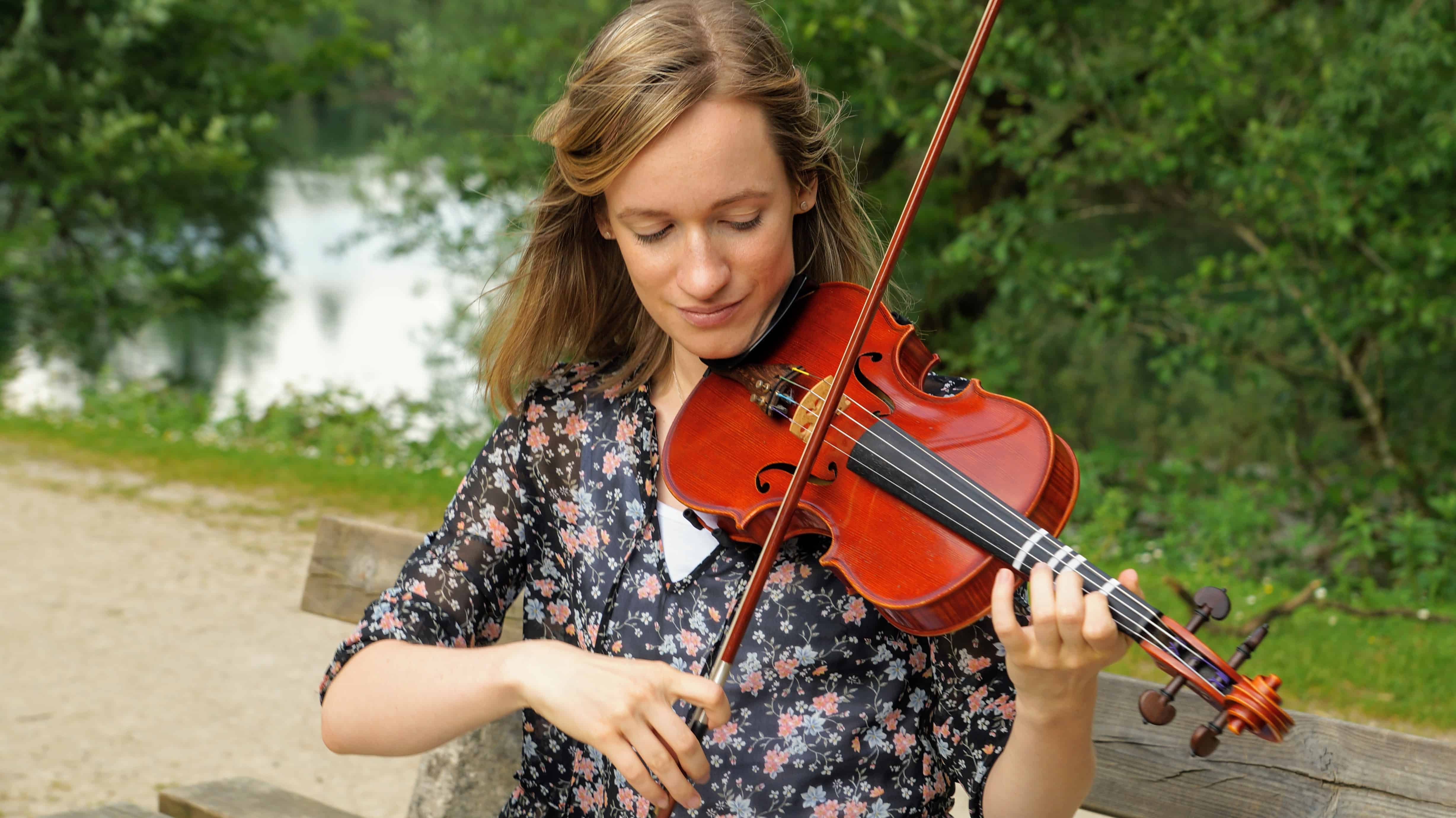Yes, you can teach yourself the violin. But it requires dedication and patience.
In the meantime, don't forget to unlock a world of unlimited sound with Amazon Music Unlimited, where over 100 million songs wait at your fingertips. Whether you're working, relaxing, or fueling your creativity, the right track is always just one tap away. Elevate every moment with music that moves you.
Learning the violin on your own might seem daunting at first. You might wonder if it’s possible without formal lessons. Many have successfully taught themselves this beautiful instrument, so you’re not alone. With the right resources and commitment, you can master basic techniques and play your favorite songs.
This blog post will guide you through the essential steps to get started. We’ll discuss what you need, from choosing the right violin to finding helpful learning materials. Let’s explore how you can embark on this musical journey and become a self-taught violinist.

Credit: meadowlarkviolin.com
Starting Your Violin Journey
Embarking on your violin journey is an exciting adventure. It requires commitment, patience, and the right tools. Learning the violin can be rewarding, and you can teach yourself with the right resources. This guide will help you start on the right foot.
Choosing Your First Violin
Choosing your first violin is crucial. The right instrument can make learning enjoyable. When selecting, consider the following factors:
- Size: Violins come in different sizes. Make sure to get one that fits you.
- Quality: A well-made violin will sound better and be easier to play.
- Budget: You don’t need to spend a lot. Many good-quality violins are affordable.
It’s helpful to try a few violins before buying. Visit a music store or ask for recommendations from experienced players.
| Violin Size | Player’s Arm Length |
|---|---|
| 1/16 | 14 inches |
| 1/10 | 15 inches |
| 1/8 | 16.5 inches |
| 1/4 | 18.5 inches |
| 1/2 | 20 inches |
| 3/4 | 22 inches |
| 4/4 (Full size) | 23 inches and above |
Essential Accessories
Along with your violin, you need some essential accessories. These will help you play better and maintain your instrument. Here’s what you need:
- Bow: A good bow is essential for producing sound. Invest in a quality bow that complements your violin.
- Rosin: This sticky substance helps the bow grip the strings. It’s necessary for producing clear sounds.
- Shoulder Rest: This accessory provides comfort and stability while playing. It helps you hold the violin correctly.
- Tuner: Keeping your violin in tune is crucial. A digital tuner can help you with this.
- Case: Protect your violin with a sturdy case. It keeps your instrument safe during transport.
- Music Stand: A stand is useful for holding your music sheets while practicing.
These accessories are readily available online and in music stores. They make your learning experience smoother and more enjoyable.

Credit: violinspiration.com
Learning Resources
Learning the violin by yourself can be both exciting and challenging. Fortunately, there are many learning resources available to help you. These resources can guide you through the basics and beyond. Let’s explore some of the best options.
Books And Online Tutorials
Books are a great way to start learning the violin. They provide structured lessons and exercises. Here are some recommended books:
- “Essential Elements for Strings” by Michael Allen – This book is suitable for beginners. It covers the basics and includes exercises.
- “Suzuki Violin School” by Shinichi Suzuki – Known for its step-by-step approach, this book is great for self-learners.
Online tutorials are also beneficial. Many websites offer free and paid courses. Some popular ones include:
- Violin Lab – Offers detailed tutorials and a supportive community.
- Fiddlerman – Provides free lessons and resources for all levels.
Video Lessons And Apps
Video lessons can be very helpful. They allow you to see and hear the techniques. Here are some platforms with high-quality video lessons:
- Youtube – Channels like Violin Tutor Pro and Red Desert Violin offer free lessons.
- ArtistWorks – Provides comprehensive violin courses taught by professionals.
Apps are also a great tool for learning. They make practice sessions interactive and fun. Some useful apps include:
- Trala – Offers personalized violin lessons and feedback.
- Play Violin – An app for beginners with interactive exercises.
Basic Techniques
Learning the violin can be a rewarding experience. To start, mastering basic techniques is essential. These foundational skills will set you on the right path. Let’s explore some key aspects of playing the violin.
Holding The Violin And Bow
Properly holding the violin is crucial. Rest the violin on your left shoulder. Your chin should gently touch the chin rest. Keep your left hand relaxed. Your thumb should support the neck of the violin. The rest of your fingers curve around to the fingerboard.
The bow hold is equally important. Hold the bow with your right hand. Your thumb should be bent and rest on the frog. Your index finger wraps around the bow. The middle and ring fingers should also rest on the bow. Your pinky should balance on top.
Basic Finger Placement
Finger placement determines the notes you play. Use the tips of your fingers to press the strings. Each finger corresponds to a different note. Start with the first finger (index finger) on the first string (E string). Press down firmly but not too hard. Your second finger goes next, followed by the third, and then the fourth.
Practice moving your fingers smoothly between notes. Keep your wrist straight and relaxed. This helps in playing clear, precise notes. Regular practice will improve your finger placement accuracy.
Practicing Effectively
Practicing the violin effectively is crucial for self-taught learners. Without proper practice habits, progress can be slow. You might feel discouraged. This section focuses on creating a solid practice routine. It also emphasizes setting achievable goals.
Creating A Practice Schedule
A consistent practice schedule is key to learning the violin. Aim for daily practice. Even short sessions help. Start with 15 minutes each day. Gradually increase the duration. Consistency is more important than long practice sessions.
Choose a time that works best for you. Morning or evening, it doesn’t matter. The key is to stick to it. Make it a part of your daily routine. Like brushing your teeth. This helps build muscle memory and improves technique.
Setting Achievable Goals
Set small, achievable goals for each practice session. Focus on one aspect at a time. It could be a new scale or a tricky passage. Break down complex pieces into smaller sections. Master each section before moving on.
Write down your goals. Track your progress. This keeps you motivated. It also makes it easier to see improvement. Celebrate small victories. They add up over time. Remember, learning the violin is a journey. Enjoy each step of the way.
Overcoming Challenges
Teaching yourself the violin is a rewarding journey. But it comes with challenges. These obstacles can test your patience and dedication. Let’s explore some ways to overcome these hurdles.
Staying Motivated
Staying motivated can be tough. Especially when progress is slow. Here are some tips:
- Set small, achievable goals: Break down your practice into manageable parts. Focus on mastering one piece at a time.
- Celebrate your progress: Reward yourself for each milestone. This can be as simple as enjoying your favorite snack.
- Join a community: Connect with other violin learners. Share your experiences and learn from theirs.
Dealing With Frustration
Feeling frustrated is normal. The violin is a challenging instrument. Here are some strategies to cope:
- Take breaks: Step away for a bit. Return with a fresh mind.
- Practice mindfulness: Spend a few minutes meditating. Calm your mind before resuming practice.
- Seek feedback: Record your playing. Compare it with a professional’s recording. Identify areas for improvement.
Remember, persistence is key. With time and effort, you will improve.

Credit: violinspiration.com
Assessing Your Progress
Assessing your progress is crucial when teaching yourself the violin. It helps you identify areas for improvement. It also keeps you motivated. Here are some tips on how to track your progress effectively.
Recording Your Practice
Recording your practice sessions can be very helpful. Use your phone or a camera. Listen to the recordings later. Compare them with previous recordings.
Notice any improvements. Pay attention to your mistakes. This helps you understand what to work on next.
Seeking Feedback
Getting feedback is important. Ask friends or family to listen to you play. You can also join online forums. Share your recordings there.
Experienced players can offer valuable advice. They can point out mistakes you might miss. Use their feedback to improve your skills.
Joining A Community
Learning the violin can be a rewarding journey, but it can sometimes feel isolating. Joining a community can provide support, motivation, and valuable feedback. Whether online or in-person, connecting with other violin enthusiasts can enhance your learning experience.
Online Forums And Groups
Online forums and groups offer a wealth of resources and support. You can find forums specifically for violin learners. Here, you can ask questions, share your progress, and get advice from more experienced players.
Popular platforms like Reddit and Facebook have many active groups. These communities often host virtual events, practice challenges, and live Q&A sessions. This interaction can keep you motivated and help you stay on track.
- Reddit: r/violinist
- Facebook: Violin Practice Partners
- Violinist.com Forums
Local Music Communities
Local music communities offer in-person interaction. Joining a local orchestra or music school can provide structured learning and performance opportunities. Many towns have community orchestras open to all skill levels.
Check out local bulletin boards or community centers. Libraries and music stores often have information on local groups. Attending local music events can also help you meet fellow musicians.
Benefits of joining local groups include:
| Benefit | Details |
|---|---|
| Personal Interaction | Face-to-face learning and feedback |
| Performance Opportunities | Play in front of an audience |
| Structured Practice | Regular rehearsals |
Long-term Growth
Teaching yourself the violin can be a rewarding journey. Long-term growth is essential for developing a deep connection with the instrument. This section will discuss how to build a repertoire and explore advanced techniques.
Building A Repertoire
Building a repertoire is a vital part of long-term growth. Start with simple pieces. Progress to more complex compositions. Here are a few tips:
- Begin with familiar tunes: Choose songs you already know.
- Mix genres: Classical, folk, and pop can keep practice interesting.
- Set goals: Aim to master a new piece each month.
A steady approach helps in understanding different styles and techniques. Over time, you will develop your unique playing style. Consistent practice is key.
Exploring Advanced Techniques
Once you have a solid foundation, explore advanced techniques. These can include:
| Technique | Description |
|---|---|
| Vibrato | A technique to add emotion to notes by varying pitch. |
| Double stops | Playing two notes simultaneously. |
| Harmonics | Lightly touching the string to create a high-pitched sound. |
These techniques add depth to your playing. They require patience and practice. Use online tutorials and resources. Step-by-step guides can be helpful.
Long-term growth involves continuous learning. Stay curious and keep exploring new methods. The journey of learning the violin is never-ending, but always fulfilling.
Frequently Asked Questions
Can Beginners Teach Themselves The Violin?
Yes, beginners can teach themselves the violin. With dedication, online resources, and consistent practice, self-learning is achievable.
What Are The Basics Of Learning Violin?
The basics include proper posture, holding the violin correctly, learning finger positions, and practicing bowing techniques.
How Much Time To Learn Violin Basics?
Learning the basics of violin can take a few months with regular practice and dedication.
Are Online Violin Lessons Effective?
Yes, online violin lessons are effective. They offer structured courses, video tutorials, and interactive platforms for learning.
Conclusion
Teaching yourself the violin is possible with dedication and patience. Start with simple tunes. Practice daily to see improvement. Online tutorials and books can help guide you. Remember, progress may be slow at first. Stay consistent and enjoy the process.
Celebrate small victories along the way. Playing the violin can be a rewarding hobby. Keep your goals realistic and take breaks when needed. With time and effort, you can play beautiful music.
{ “@context”: “https://schema.org”, “@type”: “FAQPage”, “mainEntity”: [ { “@type”: “Question”, “name”: “Can beginners teach themselves the violin?”, “acceptedAnswer”: { “@type”: “Answer”, “text”: “Yes, beginners can teach themselves the violin. With dedication, online resources, and consistent practice, self-learning is achievable.” } } , { “@type”: “Question”, “name”: “What are the basics of learning violin?”, “acceptedAnswer”: { “@type”: “Answer”, “text”: “The basics include proper posture, holding the violin correctly, learning finger positions, and practicing bowing techniques.” } } , { “@type”: “Question”, “name”: “How much time to learn violin basics?”, “acceptedAnswer”: { “@type”: “Answer”, “text”: “Learning the basics of violin can take a few months with regular practice and dedication.” } } , { “@type”: “Question”, “name”: “Are online violin lessons effective?”, “acceptedAnswer”: { “@type”: “Answer”, “text”: “Yes, online violin lessons are effective. They offer structured courses, video tutorials, and interactive platforms for learning.” } } ] }As an Amazon Associate, Cleanestor earns from qualifying purchases at no additional cost to you.

